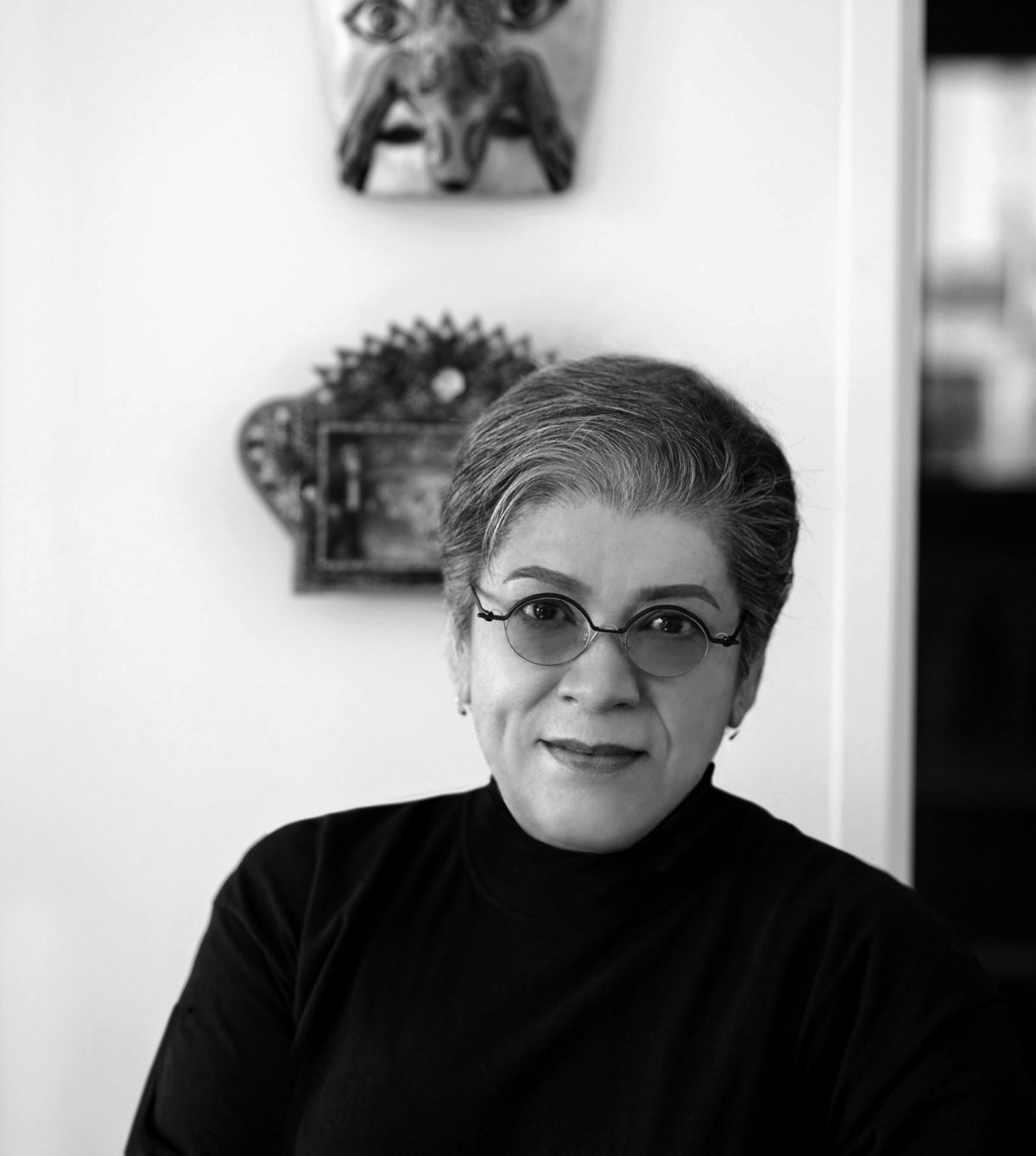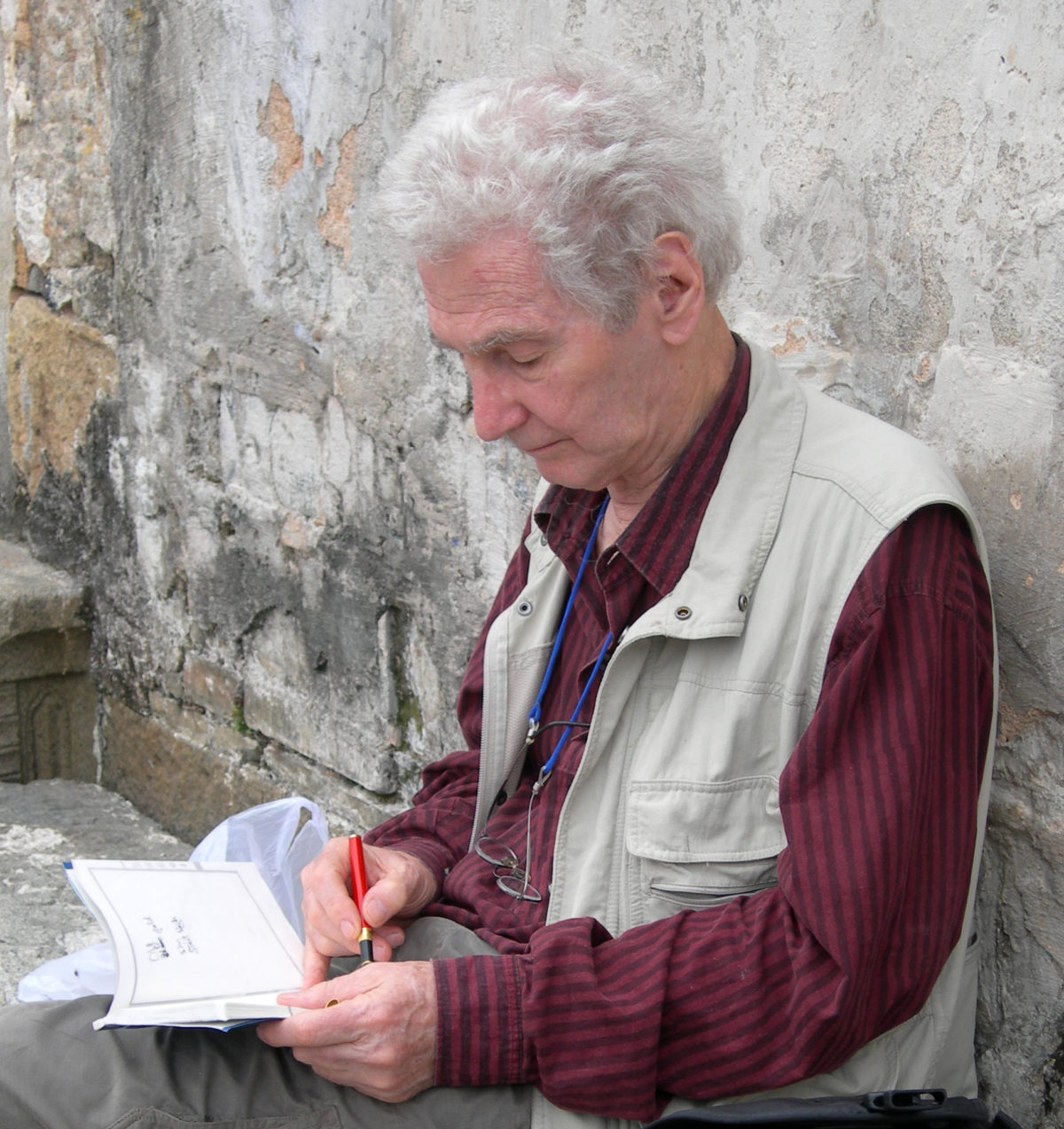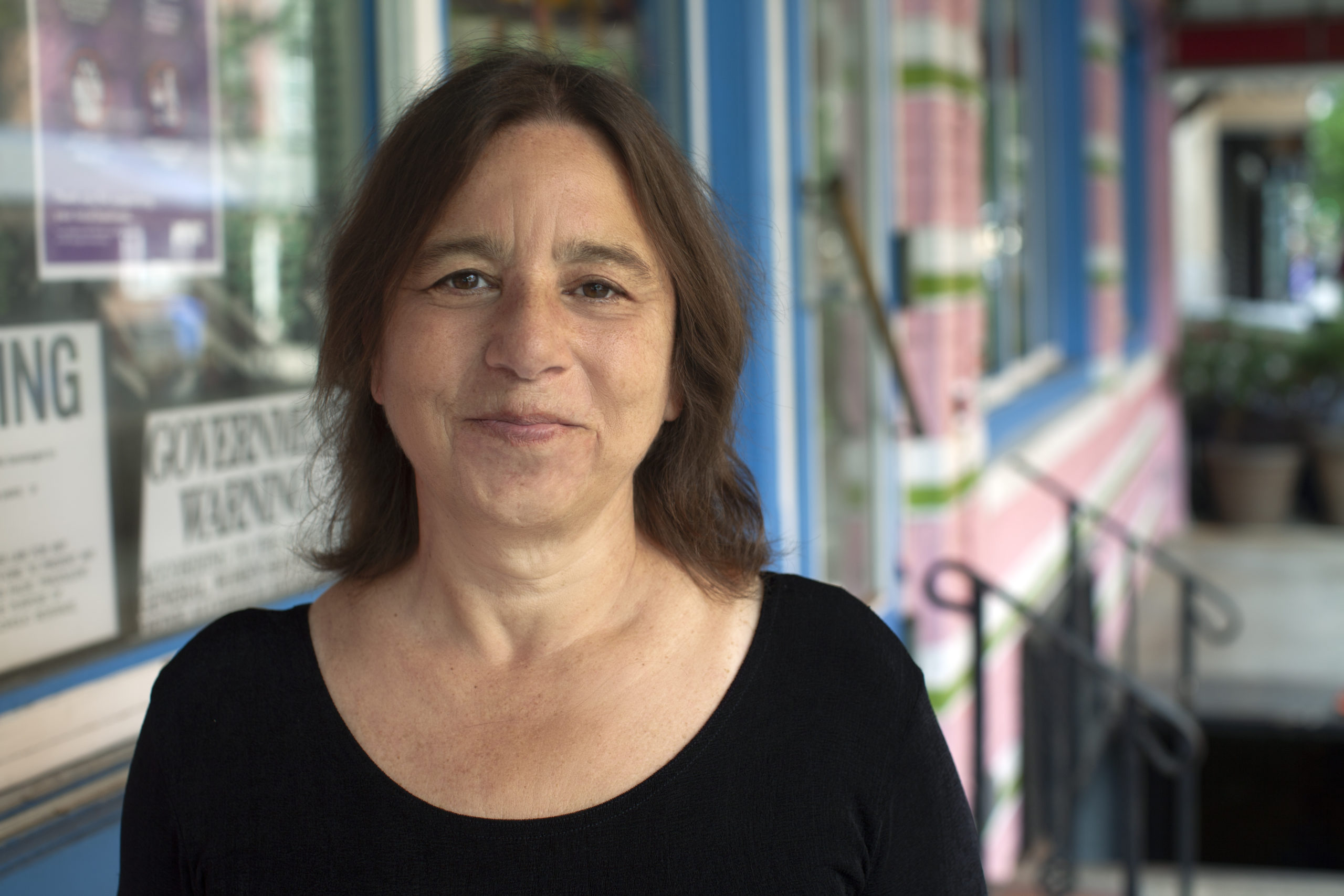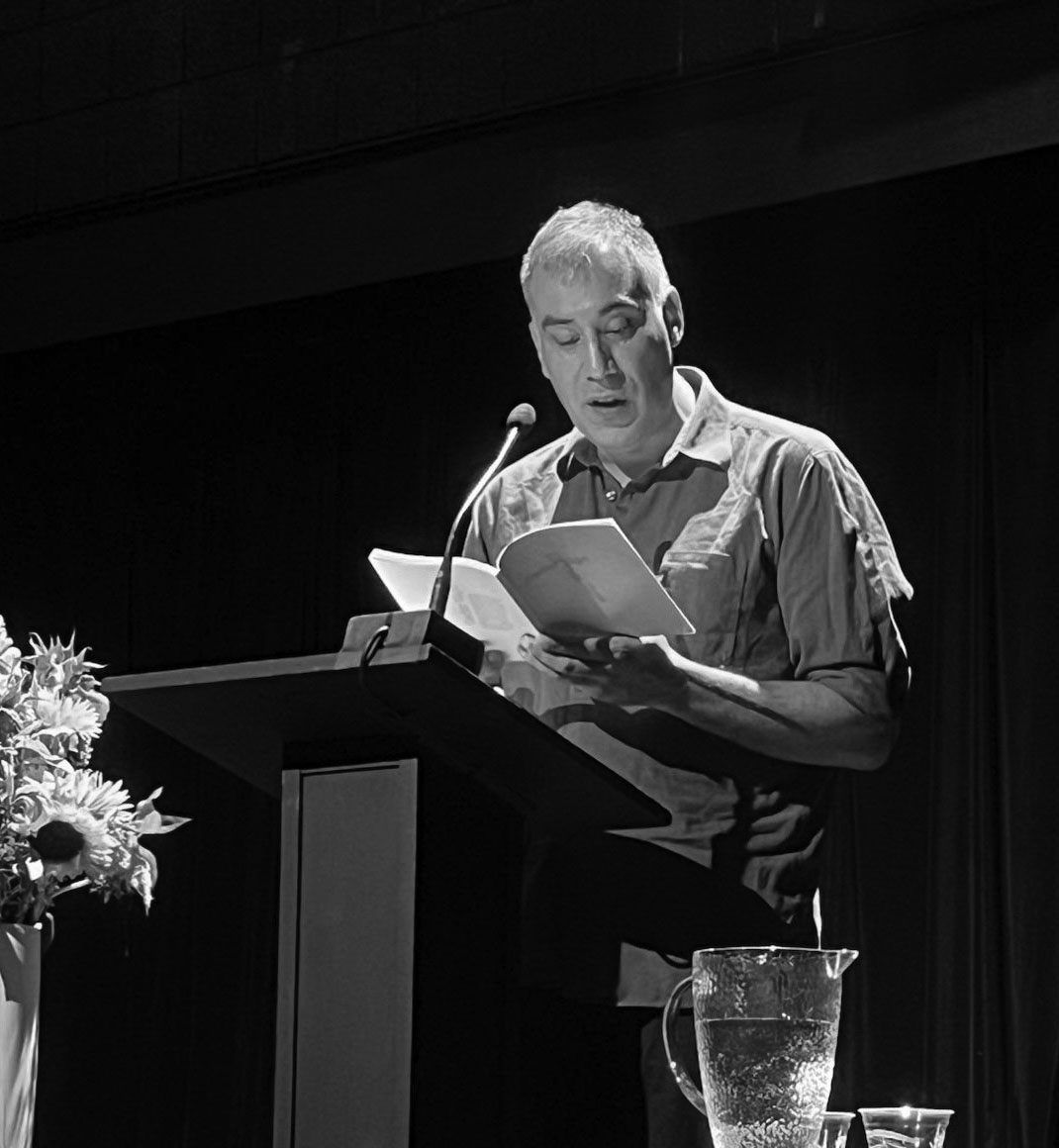
Those long, cool San Francisco nights that seem to have no edges, only avenues of columns and evergreens without walls.
—John Wieners
Cedar Sigo lived in San Francisco from 1999 to 2016. During that time he wrote and published Language Arts, Stranger in Town, Expensive Magic, Good Night Nurse, his Selected Writings as well as many broadsides and collaborations. I met Cedar a year ago at a reading with Wave Books on Capitol Hill in Seattle. I had been reading his collection of lectures Guard the Mysteries. It became a life line, an infinity pool of inspiration, a family tree of poets to live with. “I hope that I can inspire young poets to hang in there when they feel ignored or are literally broke and hopeless,” Cedar said in an interview with Little Infinite. “I hope that I can be an example of a poet doing more than just writing in a corner in their notebook.” Cedar’s love for poetry is infectious. He allows it to take over. As he told me, sitting underneath the convex mirror at The Sorrento bar, “it’s time to get the show on the road.”
Cedar Sigo is a poet and member of the Suquamish Nation. He studied at The Jack Kerouac School of Disembodied Poetics at the Naropa Institute. He is the author of endless books and pamphlets of poetry, including All This Time (Wave Books, 2021), Stranger in Town (City Lights, 2010), Expensive Magic (House Press, 2008), two editions of Selected Writings (Ugly Duckling Presse, 2003 and 2005) and most recently Siren of Atlantis (Wave Books, 2025). In 2022 he received a grants to artists award from The Foundation for Contemporary Arts. He has taught all over the country including The University of Washington, Bard College, Washington University, Naropa University and The Institute of American Indian Arts. He lives in Lofall, Washington.
DM: What is San Francisco to you?
CS: It was a place that I escaped to from Naropa. I left Naropa because I was restless. I just wanted to get on with sensation in my life. So I moved out there because I knew Kevin Killian and I knew Joanne Kyger.
What do you remember of those first days in San Francisco?
Just being broke and realizing that I came from a place where people were being paid to be interested in my poetry, but now people are like, “What? People still write poetry? What are you doing for a job?” I was working on Haight Street at Wasteland, this vintage store, at the time. I lived in the Tenderloin in a residential hotel. So first I figured out that really, nobody knows what I’m doing. Nobody cares that much about contemporary poetry, and I realized that my education was kind of a ruse.
But, what I loved was walking around the Tenderloin. I loved the grime on the chrome and the shine and the kind of abandonment and the sadness of it. And the way light would hit buildings. And I wanted to write that way. But I wasn’t good enough. So it was a lot of wandering, lots of talking about doing, talking about writing poems and talking a lot about books with other poets. A lot of talking about the poems I wanted to make for the first couple of years because I really didn’t or couldn’t yet.
Where were these conversations happening?
I used to go to that bar at 17th and Capp. Then I went to the Latin American Club a lot. I went to Doc’s Clock, sometimes The 500 Club, and a lot of skater bars in the Mission. A lot of time was spent in bars talking to other writers who just got off work or were just about to start work or after a reading. I always loved the idea that the history of art and literature—it’s made in these dark smoky rooms, it’s made in bars. It’s not made in your studio. It’s not made at your place of business, per se. Then it’s what you take away from that, and then how you go and make something.
Were there any other landmarks of your SF days?
New College of California, in the Mission, had a little bookstore called Blue Books. And they would do these really cool flyers that were kind of Joe Brainard-inspired and they had good readings. Some of the readers would be inspired by Joanne Kyger and others would be more inspired by the Language Poets. It was nice how they used the space. You’d get a pretty full picture of all the voices in the Bay Area, or people passing through. It was being used by Small Press Traffic, which is still around.
For a time you were writing a blog for SFMoMA about art and events. Were you checking out certain galleries?
Yes, Jack Hanley, Triple Base was one. Margaret Tedesco’s Second Floor Projects. Also the Luggage Store, all of David Wilson’s site specific celebrations. Jessica Silverman was amazing, 871 Fine Arts in the Geary building, which was a bookshop by Adrienne Fish and in the back she kept this sort of rotating gallery. They held a lot of West Coast painting and collage shows in the back. That was a much older clientele and artists than Adobe. And lots of house readings, and apartment galleries were being hosted in San Francisco during that time. It was fun. Alicia McCarthy is still my favorite painter.
So it was a lot of wandering, lots of talking about doing, talking about writing poems and talking a lot about books with other poets. A lot of talking about the poems I wanted to make for the first couple of years because I really couldn’t yet.
Was there a certain approach to making a poem that resided in San Francisco?
They all definitely appreciated a touch and go approach toward composition. The ideas didn’t have to be fully developed before you moved on. You could adopt this skittering nervous measure easily in San Francisco. A lot of times people would be reading stuff that was really notes on trending literature (Bartleby, Stanzas in Meditation, Adorno). You were always thrown into this zone of questioning, Is that a poem or is that notes toward a poem?
San Francisco is known for the Beat scene and before that the Renaissance. What is the difference between these two scenes for you?
The Beats just let it all hang out, they wanted to be shocking. The San Francisco Renaissance poets, Duncan and Spicer, were more attuned to seeing how the syllables, the music of the poem, would open up to allow you to express your statement. While the Beats were just like, “We’re sick of waiting, let’s just say it.” They were conscious of articulation as well, but they came along almost ten years later.
Is the “music of the poem” something that poets in San Francisco were specifically interested in developing?
Yes, in the sense that they often write without a subject, and they’ll go full bore, full steam ahead without a subject per se. So music is sometimes the only thing that’s forming, it’s your only grip onto the cliff they’re proposing.
Did you feel connected to the old guard of San Francisco? To the Beat scene, to the Renaissance scene?
I felt I was part of it because of Joanne Kyger, and because of Kevin Killian, who was writing the Jack Spicer biography at that time, and Peter Gizzi was kind of bringing out the whole Spicer trunk show then. I think in a certain sense, San Francisco has managed to keep that circle alive, the remains of a magic circle. And that has to do with poets crossing stylistic boundaries like Norma Cole, like Joanne Kyger, Philip Lamantia, Helen Adam. These are all poets with very distinct voices and ways of approaching poetry. Many very distinct styles, but they’re linked by these very magical figures, Robert Duncan and Jack Spicer.
You were kind of signed off by the old guard when City Lights published Stranger in Town. You wrote that while living there, right? How did that collection come about?
It was influenced by a lot of very crude animations I was seeing weekly at the Edinburgh Castle. David Enos, Sarah Enid Hagey, José Rodriguez—all these students from SFAI curated a film night and it was often shot on film, and sometimes they would be silent and very vivid, moving pictures, very poetic, for lack of a better word. I wrote poems being jealous of the vibrance of their imagery. I took risks and wrote with color—like old science films, Kodachrome, or the suffused color you find in experimental films. With that collection, I had for the first time a poem that was suitable to be the title poem. It was long. I published the poems first as a chapbook with my friend Micah Ballard, and we stapled it up the side and used cover art by Will Yackulic. I was exploring this whole other corridor of being a poet—not just the writing of poetry, but how to present it and share it. People were just hanging out, dropping by your house, and giving poems away.
Where were you living then?
26th and Bartlett, so between Mission and Valencia on 26th Street.
The release reading for Stranger in Town was at City Lights. How did that go?
Will Alexander read with me because they couldn’t bring out Anselm Berrigan. Usually they would bring the poet that preceded you in the Spotlight series, but Anselm lived in New York. And then I read with Will again, because he was the next book too. So it was kind of this incredible golden handcuffs situation with Will Alexander. And what I remember is that the stairwell was so crowded with people sitting on the steps just to listen. I had been in the city for so long at that point and I had built up so much goodwill across many scenes.
The City Lights I know and the one you know are very different. What was it like when you first went there?
It used to be just that first tiny room where you enter and then the basement and they used to have mostly mimeograph magazines and things. Paperback literature. And then they just kept buying more and more of the building, as it became, post-Howl, a sort of literary institution. But I did a lot of my first readings there. And I remember it was always hot and crowded. It was kind of fun depending on if you got a seat. If you were ever caught standing at a City Lights reading that was murder. I mean, that was sometimes 55 minutes of standing. So it could be painful, like church.
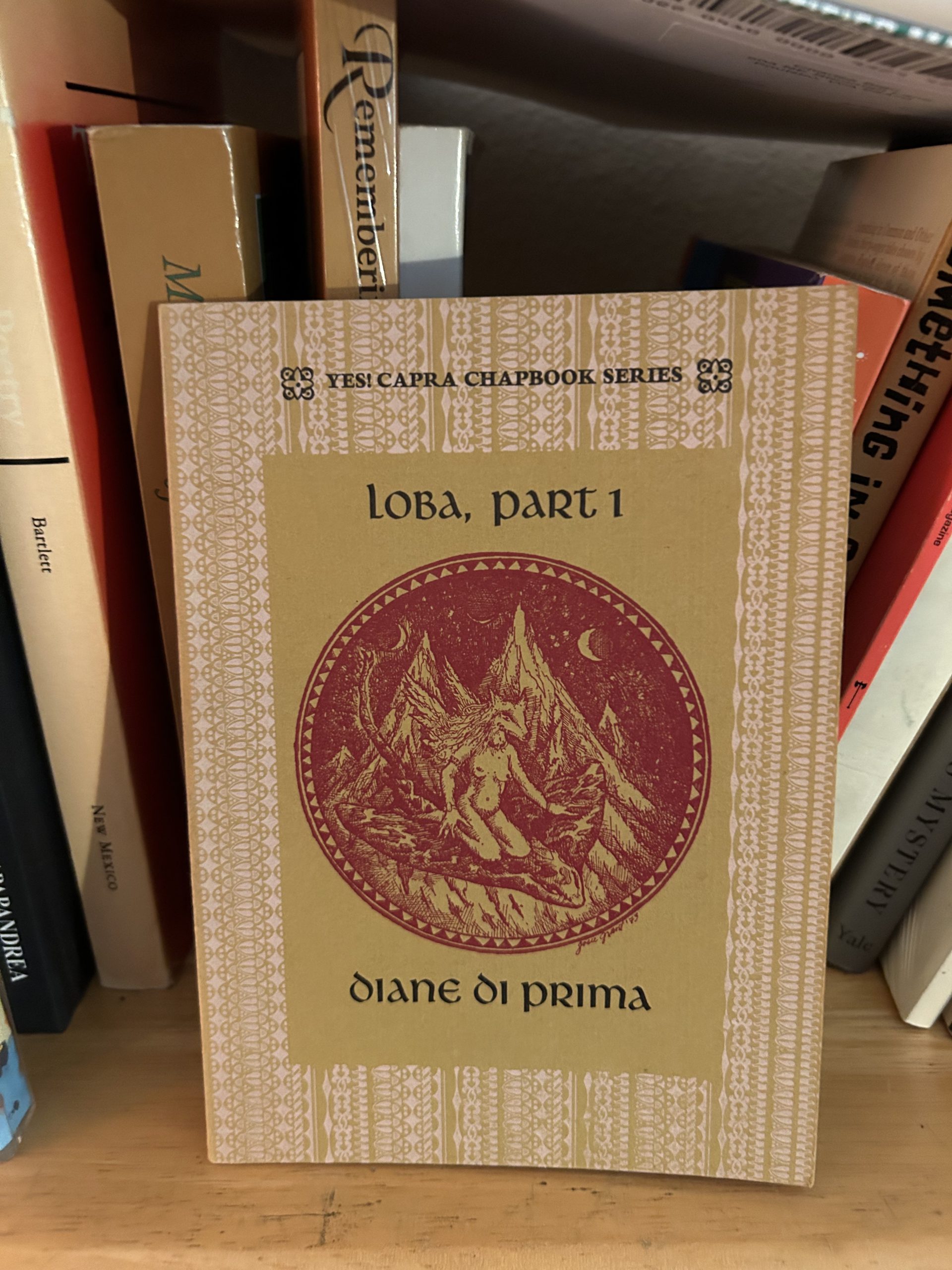
In some of our conversations you have talked about how poetry is such a smoke and mirrors game, how you have to fake it until you make it and then when you make it you still have to fake it a little bit. Is this something the older SF poets were feeling as well? How did Joanne Kyger and Diane di Prima make it all work?
The exact terrain may have been different for them. They each figured out an economy for themselves in which they could sort of survive. Diane did it through teaching, partly through Poets in the Schools for many years, which meant she had to be away from her family. Then they figured out they could just get local poets to come to some small town in Wyoming. They didn’t have to fly out professionals. She was also a founding member of the poetics program at Naropa, and taught at the now defunct New College of California. She went on to found a Magical School in the outer mission, teaching people about dimensions of healing and hidden elements of Western religions and how they became included within the occult.
And Joanne had purchased her house out in Bolinas before there were even septic tanks out there. In 1968. So, it was really cheap. She invented a certain kind of sustaining lifestyle out there, just over the bridge, so what I was getting from them was something else entirely. The message was that you need sustenance for yourself and your tribe and you need time for contemplation. How to take care of yourself between poems.
I think you’ve said that Joanne would “bring out the best china” whenever you came over for a meal.
And we would smoke beforehand. I think she always wanted us to relax by knowing we could smoke before lunch. We didn’t have to wait until after we ate.
Joints? How was it prepared? Hand rolled? Did she use a grinder?
She would trim it with these elegant little scissors that had a crane that you held. Then she would use a little joint rolling machine that had a red sheet and a bit of curvature and tension to it. If she didn’t feel like using the joint machine, she would ask her partner Donald Guravich to roll. He’s a writer and visual artist.
She was a good friend. She had no reason as far as I could tell to trust that I would be good because I definitely wasn’t a good poet when we met. At that time my work was a lot of brittleness, trying to remember charmless catchphrases and just writing down things that make us petrified and stop us from being spontaneous.
Did she ever give you specific prompts or homework? Or did she read your work and tell you what she thought? Would you show her your stuff?
She would send me poems but I would never critique them. I didn’t even fully ‘get’ them yet. I always thought they were a little more casual than what I would do. But in fact, she just had a subtle ear. I couldn’t hear it. My ear wasn’t malleable enough. It wasn’t appreciated. Our works were different when she was alive. I think part of the reason we had such chemistry was because there was some antagonism. I was interested in some of the language poets because I was being force fed that at Naropa. But she would be looking retrospectively back at this ‘movement’ that I would be presenting like it was new. She was an interesting case, because at that point she had never had any books published by City Lights, so there was still new ground for her to break. On Time was finally published in 2015. That was her last full poetry collection.
How did you meet Diane di Prima?
At Naropa when I was eighteen as a scholarship student. And as Naropa went on I would see Diane and Sheppard during the summers. Then in San Francisco I would go to all of her readings.
You penned and helped Diane with some of the last Revolutionary Letters. How did you end up at her bedside in her last days?
Because she knew me as a groupie and fellow poet. I’d always sent her what I was doing—Stranger in Town (the stapled edition), Expensive Magic, reading flyers. I would send them in the mail with a little note, “Here, this is happening.” Then I would go to all her readings. That’s how we became friends. Then we read together when the John Wieners Selected came out from Wave Books. We read at City Lights together because she loved John Wieners too. Micah and I actually picked up this wooden chair and carried her down the stairs into the City Lights basement. She looked like Queen Victoria.
She had been refusing to go on and I talked her down. I distracted her by asking about John. I tried to always have the right questions for her, and I think I did because I loved her work so much. I asked her, “Why didn’t you ever publish a book of John’s? If you loved his work so much, why isn’t there a John Wieners Poets Press book?” And she said, “He didn’t need a publisher, everybody loved his work, and he was having books out in Britain. And I was trying to publish people that needed publishers.” She mentioned Audre Lorde. Nobody else wanted to publish her at the time. Now everybody loves her. I just knew the right thing to ask her. And then I said, “We should go read together right now.” She read pieces from Nerves. It’s online.
It’s crazy that the most important work you do in your whole life could be drafting someone else’s poem. You can wander into the ending of a sixty year epic poem just by asking if you can help. The remains of a magic circle.
That was the beginning of your friendship?
No, that was after years of attentive but nonirritating devotion. By the time we were hanging out, she kind of respected me. And she knew my writing voice. And then I went to write Guard the Mysteries, and she had (apparently) been wanting somebody to write an essay about her relationship with Lorde. When she caught wind of that she was really into it.
But how did the writing of the poems come about?
I was in San Francisco giving a lecture for Guard the Mysteries. I had contacted her and asked if I could interview her. She was in the hospital, the Jewish Home for the Aged in the Excelsior. The first day she canceled. I was horrified. I felt nervous to do it. Then she wanted me to bring her sushi and I was like, I can’t do that today if I’m not interviewing you. Then she rescheduled for the next day. After I sat down in her private room she immediately started taping us. She said, “I can sell this to a university.” She had a very scratchy voice. And she was so into me asking questions about her relationship with Audre Lorde. We had a good witty back and forth. She loved to make jokes and sign the books of hers I brought.
After we finished the interview, I asked if she needed help with anything. She said, “Could you transcribe these poems?” She didn’t say Revolutionary Letters. She just said poems. She said, “They’re very short, and I have to memorize them and then I write them on this little tablet.” She gave me this shaky longhand writing in a tiny notebook. They had these three and four-line poems, and it was my job to get them into my phone. Then I would send them to her partner Sheppard. We read over them until they were just right. It was so natural. More like drawing together. She trusted me. It’s crazy that the most important work you do in your whole life could be drafting someone else’s poem. You can wander into the ending of a sixty year epic poem just by asking if you can help. The remains of a magic circle.
We have talked a lot about Bob Kaufman in the past. He died before you moved to the city but I want to ask you how his works have affected you?
Bob Kaufman’s flow just takes poetry off the page. I got into mythologizing his life, his taking a vow of silence and being disobedient to the police and dealing with life in his own way. I can relate to him because I was one of the only Native writers in the Bay Area scene, and he was also so deep in bohemia and a person of color. I love that he is in the Mexico issue of Semina magazine. There is actual footage of Bob Kaufman in Ron Rice’s legendary underground film The Flower Thief (1960).
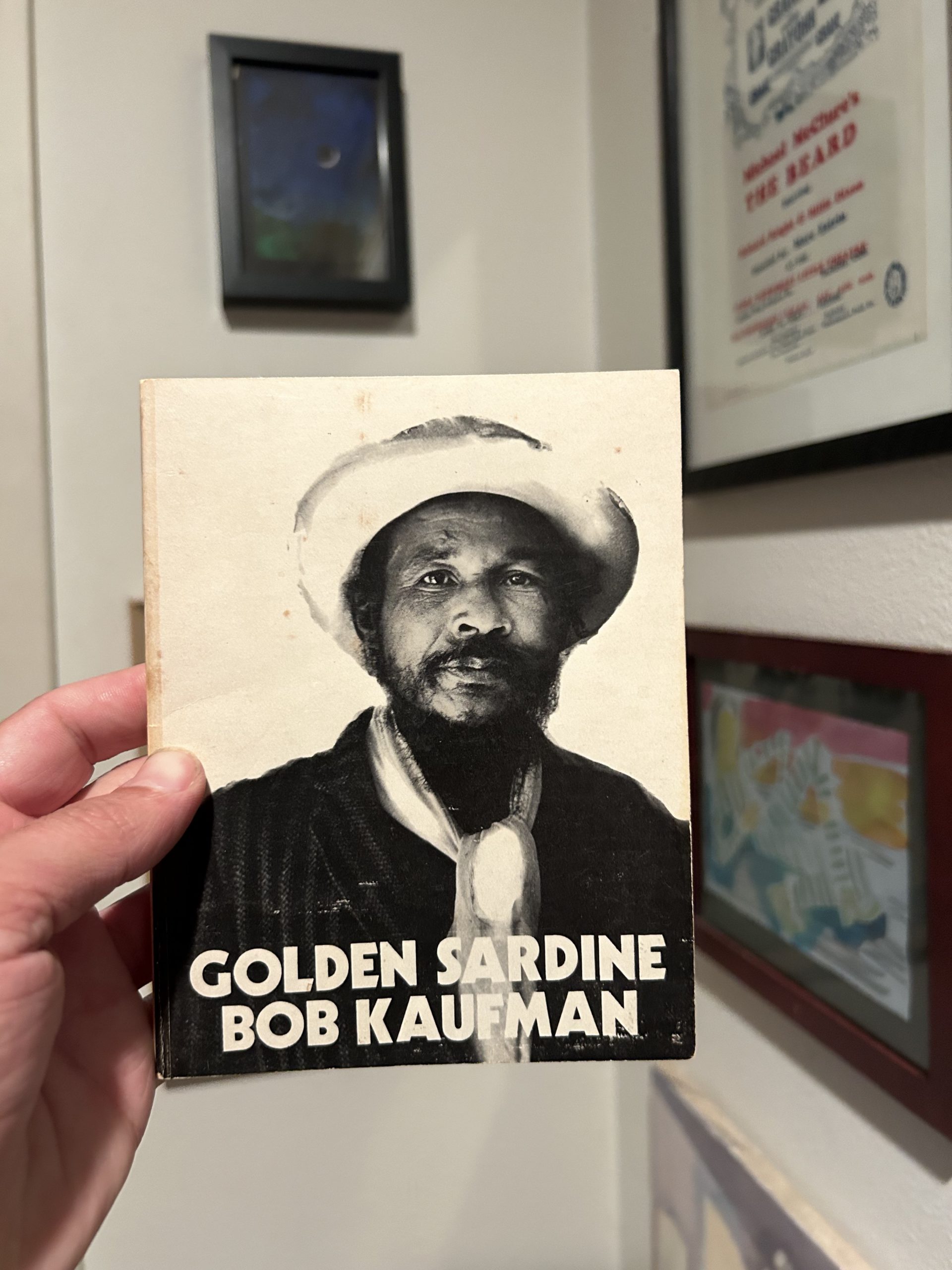
You never know where his line will turn. His poems have this kind of totemic energy because he has all these beautiful, glistening tasseled objects you can just attach in the air as he goes along, because his tongue is like liquid. No one else can do that in San Francisco. Bob Kaufman has come back to haunt everyone with his adornment. Those lines about the mirror in “Heavy Water Blues” are so sweet: “My mirror died, and can’t tell if I still reflect / I put my eyes on a diet, my tears are gaining too much weight.”
So surrealist.
Totally surrealist. That’s why he was good friends with Philip Lamantia. Philip revered him. And he revered Philip. Will Alexander talks about hanging out with Philip and Bob in the early ‘80s and he wanted to talk to Bob so badly because he loved his work. But Bob was in his silent period. So he wouldn’t say much except he would make a gesture to give him a cigarette, or buy him a drink, but nothing much more than that.
I’m thinking about the way the poems of Ancient Rain were all found in his room at the Hotel Dante after it had burned down, and his friend went in there and found this leather folder with all these amazing poems, and he had just left them there, already moved on.
Which may be his best thing. In that he uses T.S. Eliot’s lines to create these huge Choruses. Like, in the poem “All Those Ships That Never Sailed”:
All those flowers that you never grew–
that you wanted to grow
The ones that were plowed under ground in the mud–
Today I bring them back
And let you grow them
Forever.
He uses that line to just slide in on his own voice. He’s not trying to disguise it, he’s trying to teach us to do that. When I do it, I might erase, so they would think I came in with my own brilliant line, but really, I’m coming in off these coattails. I like him aligning himself with someone like T.S. Eliot, because people don’t want to see that. It’s like aligning yourself with Melville. That’s who he needs to be in the arena with at that moment. Eliot is part of his Black imagination. And I am so interested in his imagination of these figures, Kaufman’s imagination of Apollinaire is so fascinating, or, how I’m not interested in Eliot, unless it’s Eliot’s music left wavering in Kaufman’s mind.
And Bob’s adornment was always so beautiful, in his poems and his dress. He could pull off wearing something beaded. The same way he could pull off the level of refraction in his work, because he obviously is not earthbound. His imaginative life was more active than his reality. And I think that’s true for me. There is something about what I allow through from him, these colorful, vibrant, but symmetrical patterns, a certain kind of vibrance. I think I am learning how to show those edges. I think Jennifer Foerster does too, and Julian Talamantez Brolaski.

Was there a point where you felt at home in San Francisco?
(Laughs) By the time I felt at home I had to move away.

